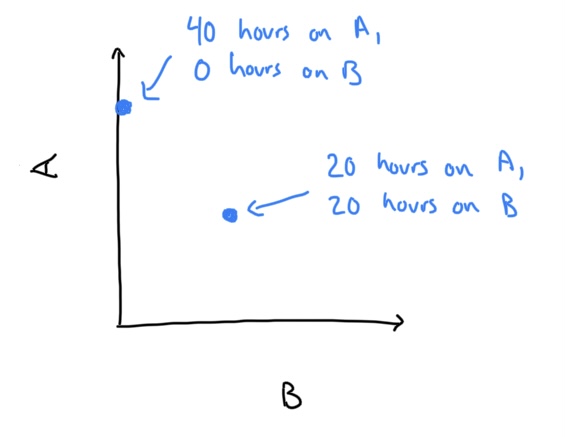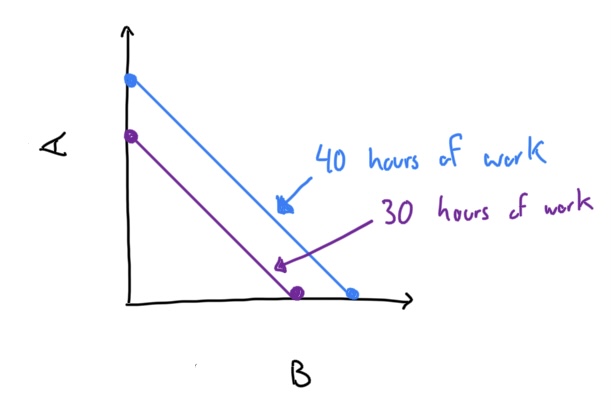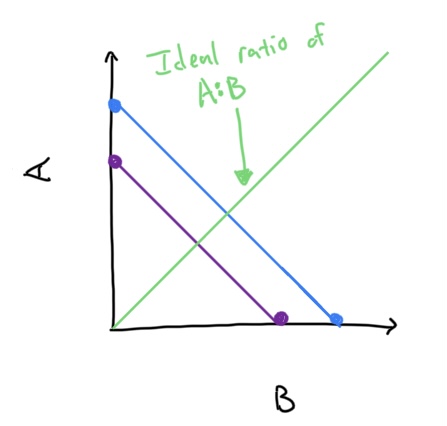A conceptual model for measuring employee performance
The book Measuring and Managing Performance in Organizations introduced a simplified framework that enables some surprisingly nuanced thinking about the traps of measuring workers. (1996)
Building the model
First, our simplified project has only two types of tasks: A and B. If we make a simple chart showing the amount of each task done by a worker, we can plot different points corresponding to different allocations of time between the two tasks.

If we plotted all possible allocations possible for a fixed amount time, we would see a line. We can even plot multiple lines corresponding to different amounts of time:

The last thing to add to our model is the understanding that the customer has a preferred allocation between A and B.

Using the model
This simple model allows us to immediately start making observations:
- If the goal of an incentive program is to increase productivity, it is equivalent to pushing a worker from one line to another.
- If only one of the tasks is incentivized, a worker will probably move away from the customers preferred allocation. This property leads to Austin’s definition of a dysfunctional motivation system: one that causes workers to move away from the ideal allocation of work.
- If an employee had perfect information and was intrinsically motivated to make the customer happy, they would naturally seek out the preferred allocation of A vs B.
We also have the framework to start seeing a negative implications of a common management behavior: measuring only one part of a tradeoff between two dimensions.
Consider the scenario where one dimension that is easily measured and one that is not, e.g. Quantity/Quality or Features/Reliability. While it may be tempting to measure what can be measured, the challenge is that people will naturally change their behavior if they know they are being measured. Therefore, measuring only one dimension of such a tradeoff will always lead to a dysfunctional allocation.